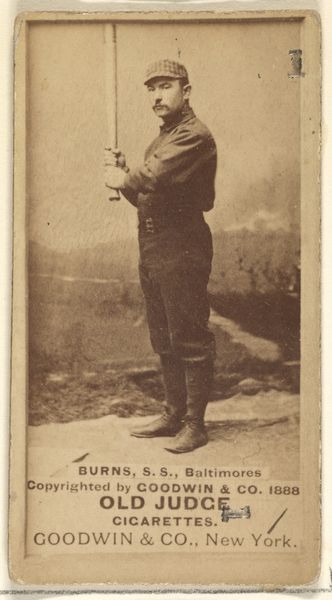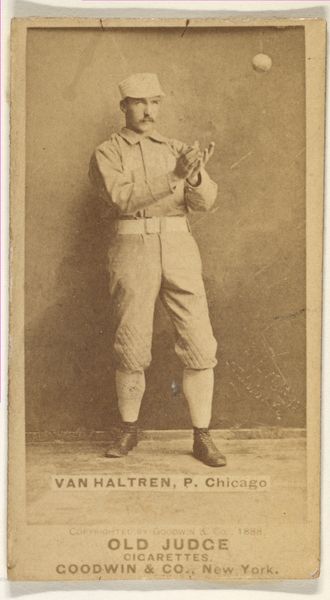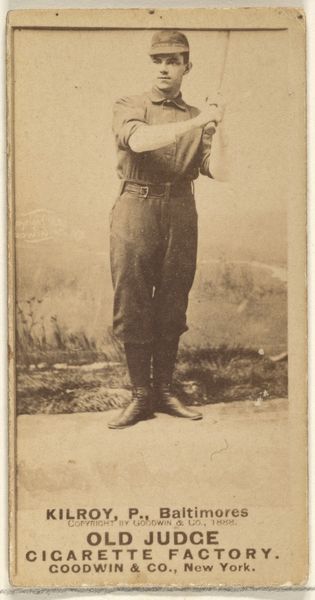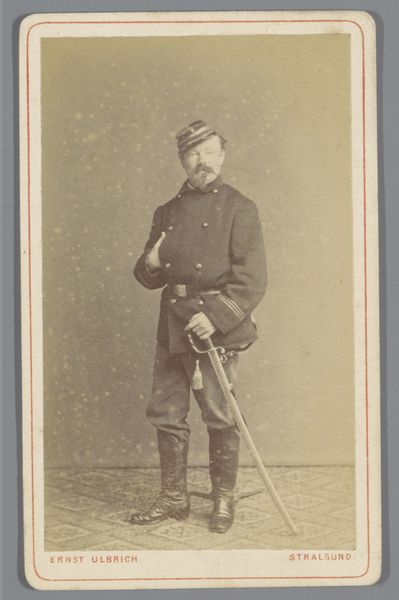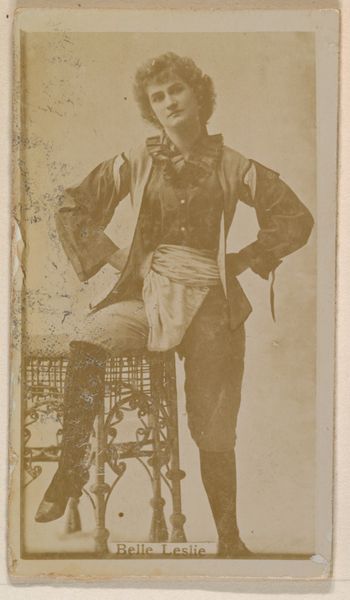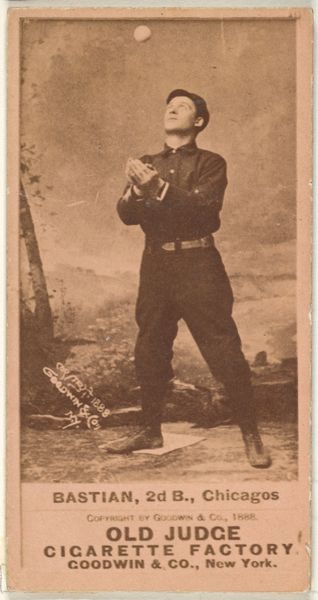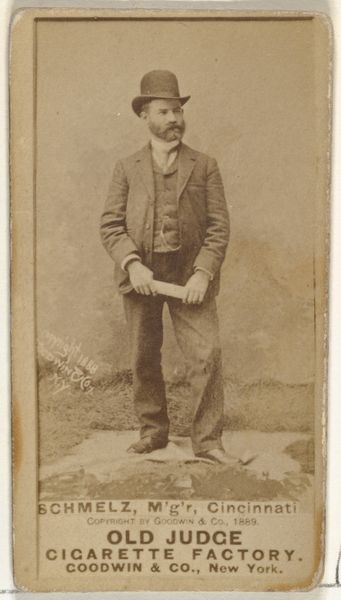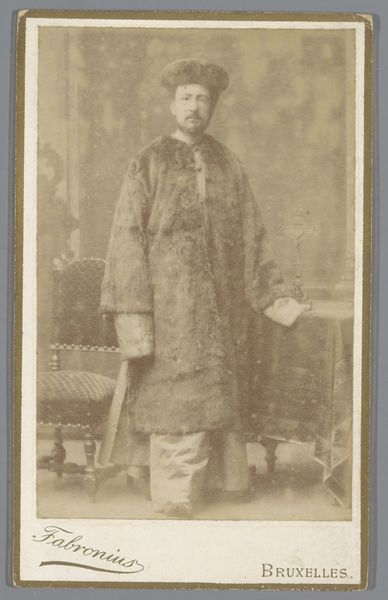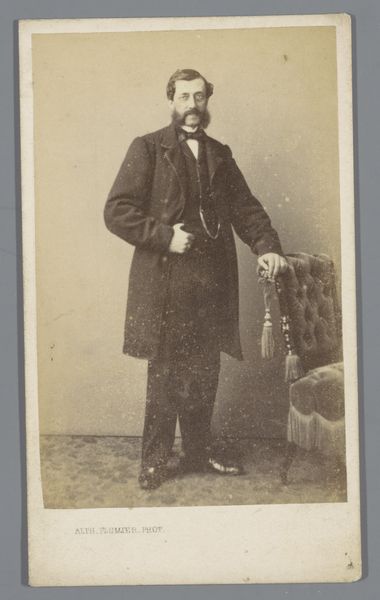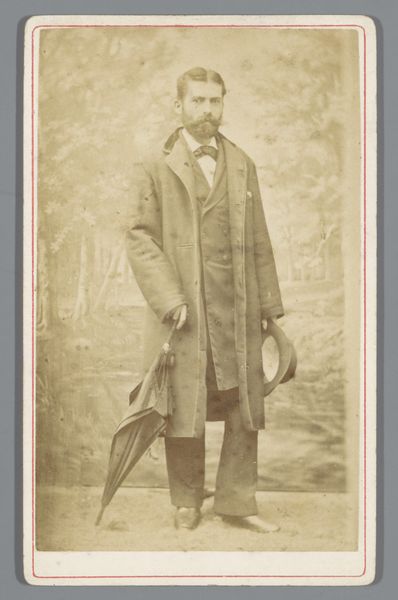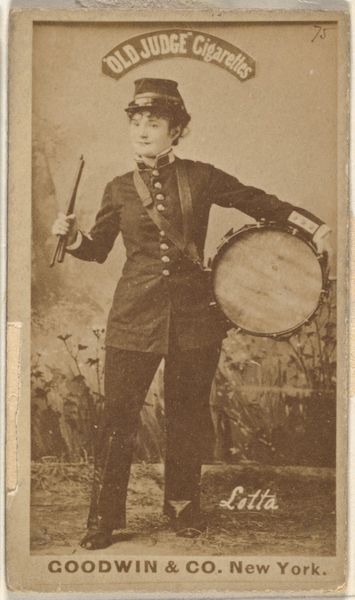![[Studio Portrait: Man with Walking Stick Begging (?)] by Le Vot](/_next/image?url=https%3A%2F%2Fd2w8kbdekdi1gv.cloudfront.net%2FeyJidWNrZXQiOiAiYXJ0ZXJhLWltYWdlcy1idWNrZXQiLCAia2V5IjogImFydHdvcmtzL2Y5MzhjNDNkLTllNmEtNDM2Yi05NzhhLTg2YjlmODM4YmE0ZC9mOTM4YzQzZC05ZTZhLTQzNmItOTc4YS04NmI5ZjgzOGJhNGRfZnVsbC5qcGciLCAiZWRpdHMiOiB7InJlc2l6ZSI6IHsid2lkdGgiOiAxOTIwLCAiaGVpZ2h0IjogMTkyMCwgImZpdCI6ICJpbnNpZGUifX19&w=3840&q=75)
[Studio Portrait: Man with Walking Stick Begging (?)] 1860s - 1870s
0:00
0:00
photography, gelatin-silver-print
#
portrait
#
photography
#
gelatin-silver-print
#
men
#
genre-painting
#
realism
Dimensions: Image: 9.5 x 5.7 cm Mount: 9.7 x 6.1 cm
Copyright: Public Domain
Curator: Today we're examining an arresting studio portrait dating from the 1860s or 70s. It's a gelatin silver print entitled "[Studio Portrait: Man with Walking Stick Begging (?)]". What's your initial take? Editor: A poignant sense of weariness strikes me immediately. The gray scale palette emphasizes the textured garments and rugged features of the man, and I’m immediately reflecting on his potential lived experiences. Curator: The composition is quite deliberate, isn't it? Note the interplay of light and shadow creating tonal variations. The walking stick acts as a vertical anchor against his subtly tilted stance, creating a slightly off-kilter asymmetrical structure that underscores, perhaps, the imbalance of his existence. Editor: Indeed. I wonder about the implications of staging a man, ostensibly impoverished, in a studio setting. There is a risk of aestheticizing hardship. Considering the socio-political climate of that era, did this portrait function as social commentary, or did it further entrench stereotypes associated with poverty and disenfranchisement? Curator: The semiotics here are rather direct, aren't they? The upturned hat, the walking stick—all conventional symbols of destitution. But consider also the materiality of the gelatin silver print itself. It renders a certain immediacy and rawness absent in earlier photographic processes, offering, arguably, a more "realistic" depiction. Editor: But realism isn't neutral. The choices made—the subject, the pose, the angle—these are all value-laden decisions. Was this man compensated for being presented as a visual embodiment of need? How complicit was he in this act of representation? This single image brings to light complicated questions of agency and exploitation inherent to portraiture. Curator: Precisely, and the inherent tension adds complexity. The formal aspects draw attention to his visual presence but the narrative pulls us to contemplate a complex relationship between subject, photographer, and audience. Editor: I agree. And these images encourage dialogue about art and its role in either perpetuating, or questioning, broader societal inequities. Thank you for the consideration. Curator: Yes, thank you. The formal construction allows entry, but it’s our combined historical and formal analyses that let us decode meaning and lasting artistic impressions.
Comments
No comments
Be the first to comment and join the conversation on the ultimate creative platform.
